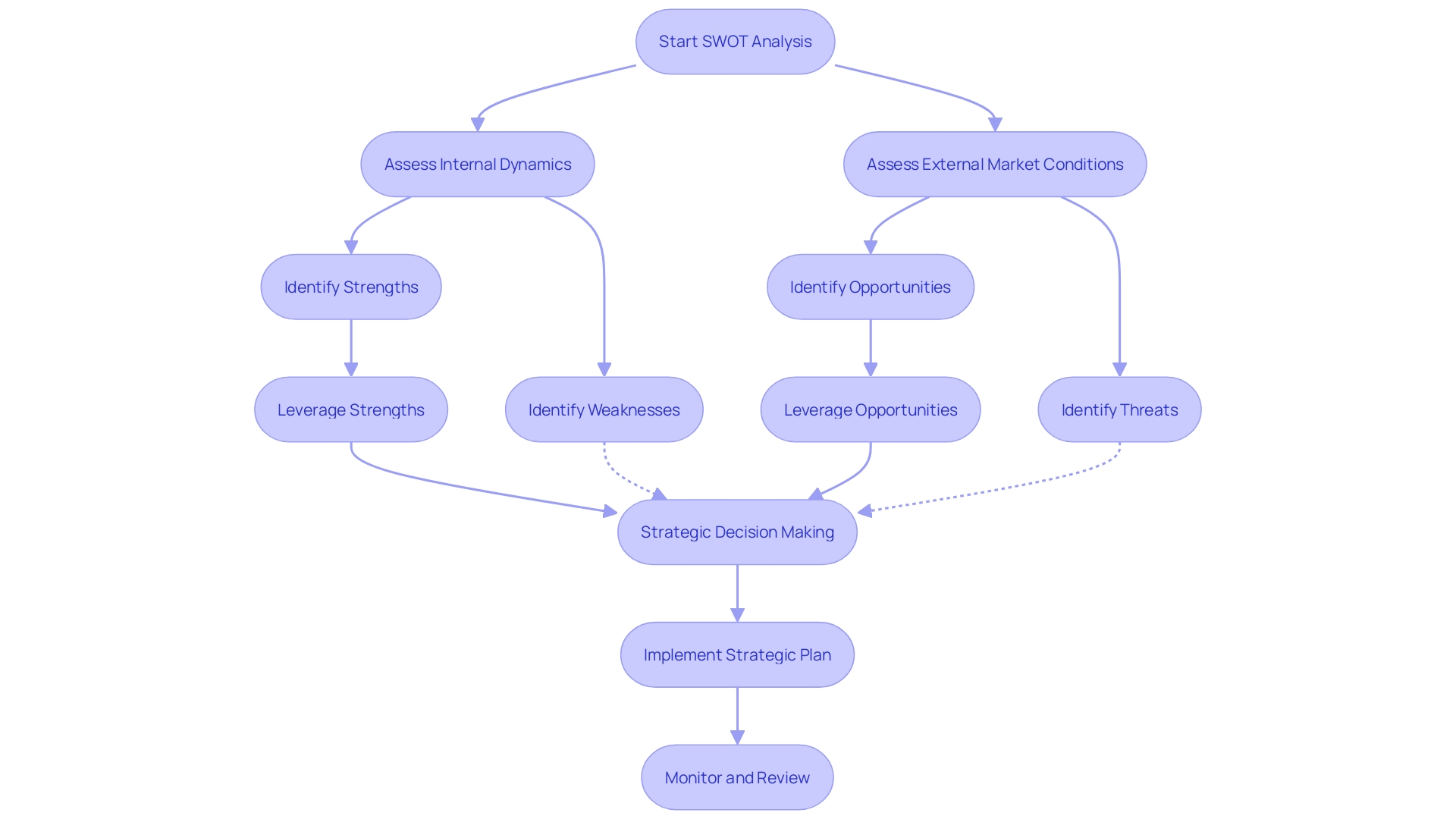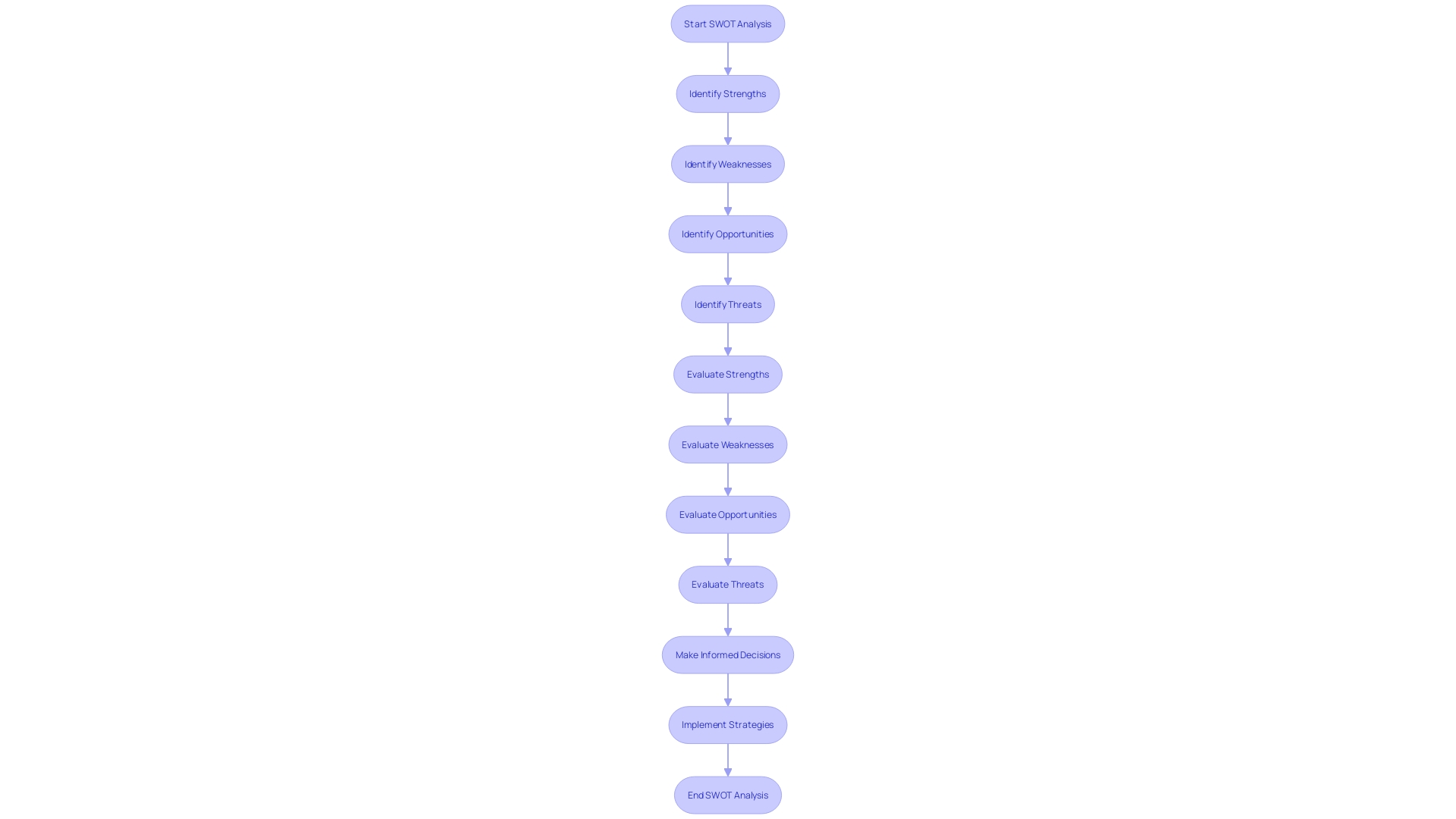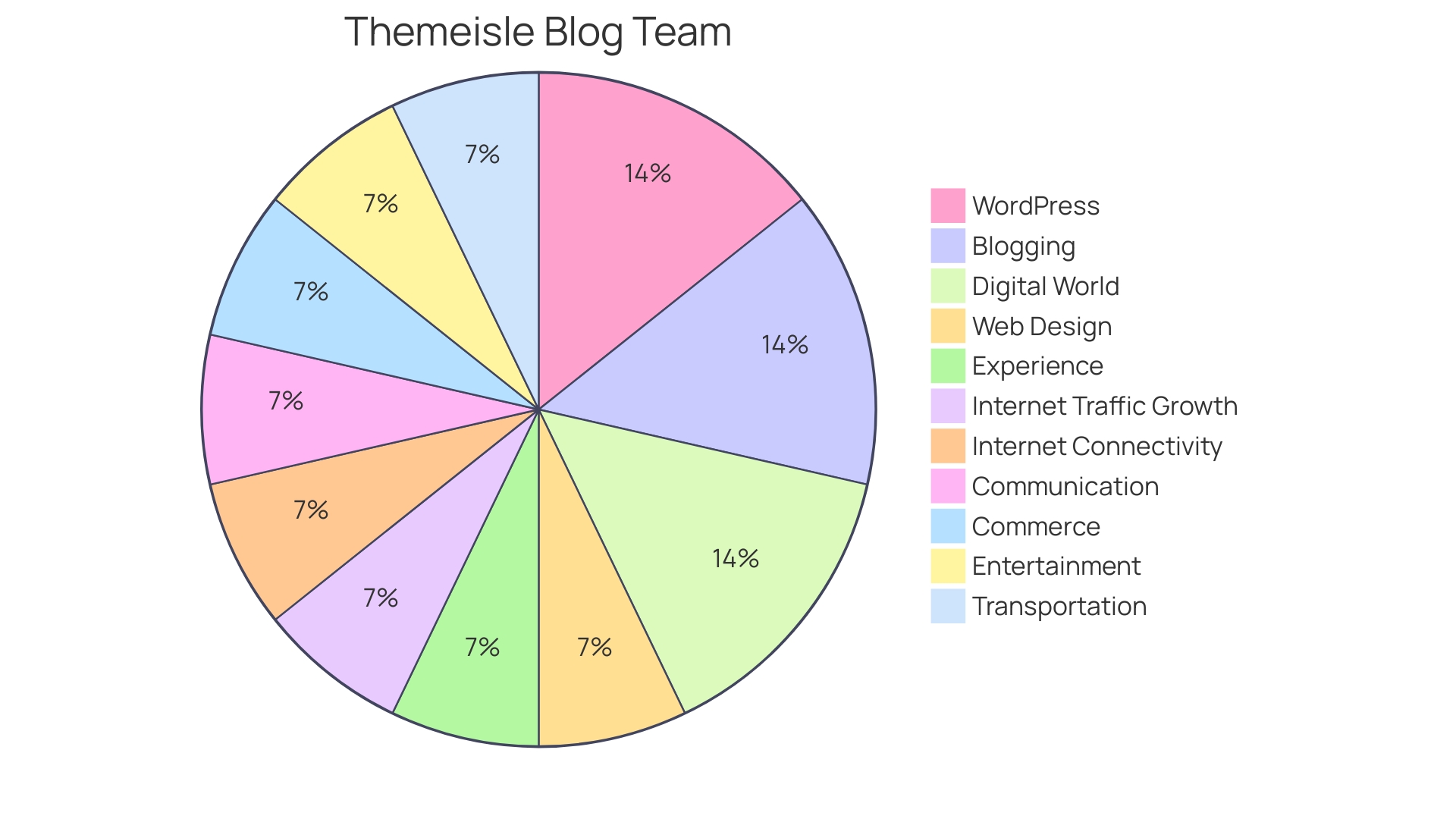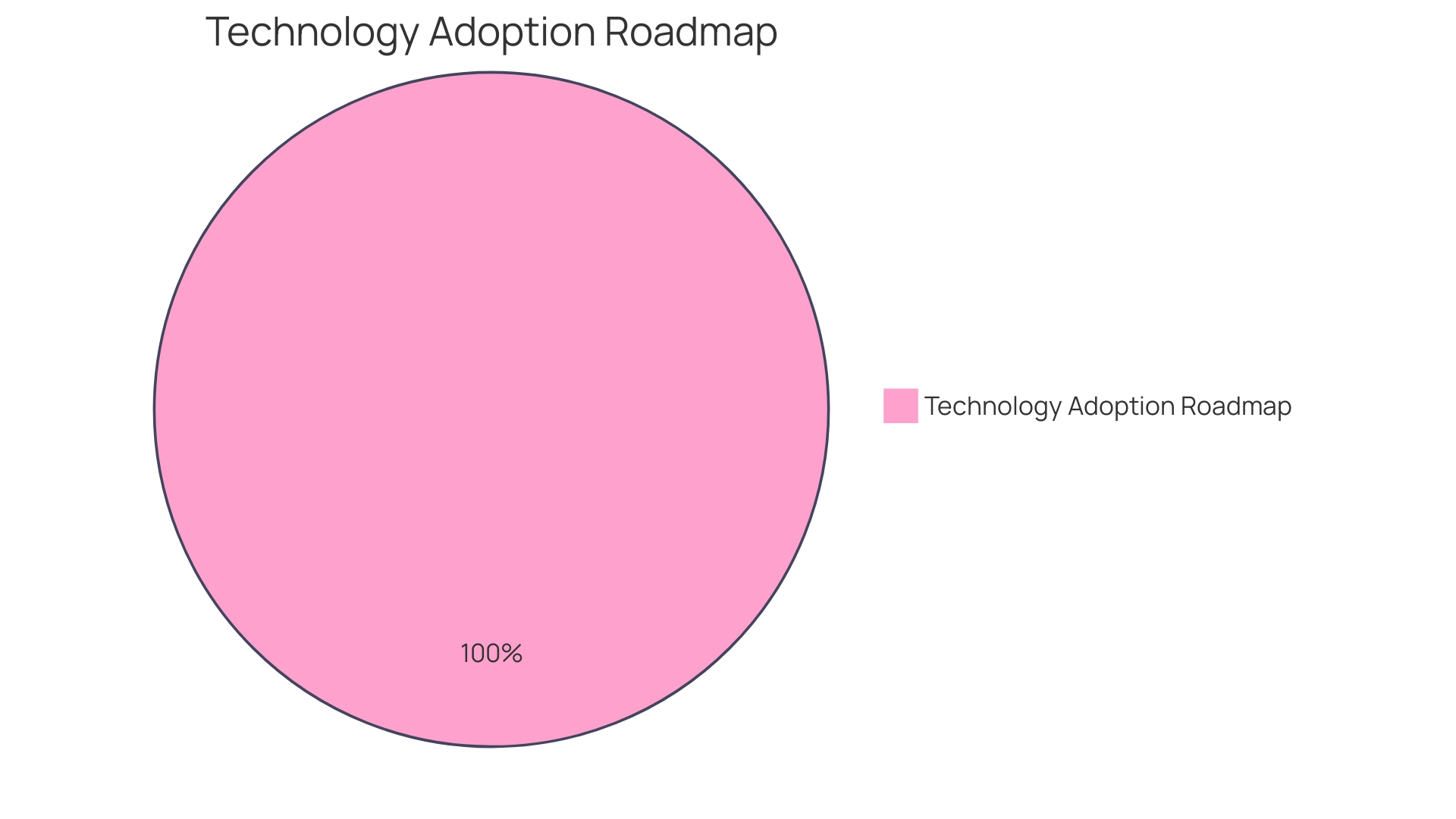Introduction
A SWOT analysis is a powerful tool for businesses to assess their internal dynamics and external market conditions. By delving into the 'Opportunities' aspect of this framework, companies can identify potential avenues for growth and expansion. Opportunities in a SWOT analysis represent external factors that a company can exploit to its advantage, such as untapped market segments, regulatory changes, or technological advancements.
In today's rapidly changing business landscape, where external factors can swiftly alter the playing field, a SWOT analysis becomes even more critical. It enables businesses to navigate potential threats by capitalizing on the opportunities that arise from these challenges. Regular SWOT assessments provide businesses with the agility to pivot strategies in response to changing market conditions, maintaining a proactive stance in securing their competitive position.
By engaging key stakeholders in this analysis, businesses gain diverse insights to pinpoint the most impactful opportunities. Incorporating SWOT analysis into strategic planning is not just about understanding where a business currently stands but also about charting a forward path that leverages every possible opportunity to its advantage.
Understanding the SWOT Framework
A SWOT analysis is an indispensable strategic tool for assessing the internal dynamics and external market conditions surrounding a business. Delving into the 'Opportunities' aspect within this framework allows companies to pinpoint and harness potential avenues for growth and expansion.
Opportunities in a SWOT analysis represent external factors that a company can exploit to its advantage. These could range from untapped market segments, regulatory changes, to technological advancements. For instance, a global shift towards sustainability can be seen as an opportunity for companies to innovate with eco-friendly products, thus meeting emerging consumer demands and gaining a competitive edge.
Identifying opportunities requires asking probing questions about market trends, customer needs, and industry shifts. It's about scanning the horizon for factors that, while external and beyond direct control, can be leveraged if recognized timely. A common mistake is to confuse opportunities with strengths, which are inherently internal attributes such as a skilled workforce or robust financial reserves.
In the current business landscape, where factors like a global pandemic or fluctuating material costs can swiftly alter the playing field, a SWOT analysis becomes even more critical. It enables businesses to navigate through potential threats by capitalizing on opportunities that arise from these very challenges.
To illustrate, let's consider the case of a marketing team leveraging a SWOT analysis to enhance their brand's presence. By identifying the surge in digital consumption as an opportunity, they can shift focus towards online advertising, thus increasing brand visibility where the audience's attention is most engaged.
Moreover, regular SWOT assessments furnish businesses with the agility to pivot strategies in response to changing market conditions, maintaining a proactive stance in securing their competitive position. Engaging key stakeholders in this analysis ensures a comprehensive view, drawing from diverse insights to pinpoint the most impactful opportunities.
In conclusion, incorporating SWOT analysis into strategic planning is not just about understanding where a business currently stands but also about charting a forward path that leverages every possible opportunity to its advantage.

Identifying Opportunities in SWOT Analysis
Discovering opportunities is a pivotal outcome of a SWOT analysis, which stands for Strengths, Weaknesses, Opportunities, and Threats. This analytical framework assists businesses in identifying both what they excel at and the challenges they face. For instance, a company's strengths might include a dedicated workforce, robust financial resources, or cutting-edge technology—all elements that distinguish it from competitors.
It's by leveraging these strengths that businesses can unearth opportunities that are not only aligned with their capabilities but also resonate with market needs.
Opportunities, unlike strengths and weaknesses which are internal factors, are external. They could be shaped by market trends, changes in consumer behavior, or even regulatory shifts. Identifying these opportunities requires a keen understanding of the external business environment.
It's about asking the right questions, such as what are the main objectives for the company this year? Are there emerging markets to tap into or new customer needs to meet?
A thorough SWOT analysis involves all stakeholders and relies on up-to-date data, leading to more profound insights. It helps businesses to adapt swiftly to market changes and maintain a competitive edge. For example, a global pandemic might be seen as a threat, but for some businesses, it could also present an opportunity to pivot to online services or tap into new consumer needs for health and safety products.
The goal is to utilize the SWOT matrix as a living document, one that is revisited and revised regularly. This dynamic approach ensures that strategies remain relevant and that the business can capitalize on opportunities at the right time, keeping it ahead of the curve in an ever-evolving industry landscape.

Examples of External Opportunities in Content Marketing
As businesses navigate the vast ocean of digital marketing, the significance of content marketing cannot be overstated. With the industry projected to burgeon to a staggering $600 billion by 2024, it's clear that seizing external opportunities is not just beneficial—it's imperative for staying ahead in the game.
Exploring emerging trends, new technologies, and shifts in consumer behavior offers valuable terrain for creating content that resonates and captivates. For instance, the advent of artificial intelligence, particularly generative AI that crafts copy and images, is revolutionizing how content is produced. Marketers who dedicate time to comprehend these tools, and integrate AI into their content creation processes, are poised to lead the pack with compelling narratives that align with audience preferences and search engine algorithms.
Consider the approach of a pediatric service line focusing on sleep medicine. By tuning into the pulse of current trends and understanding what information their audience seeks, content can be sculpted not only to inform but to engage and answer pressing questions, thereby elevating the brand's authority and relevance.
Similarly, the marine industry witnessed a refreshing twist with OTW's strategy for Volvo Penta. By eschewing the conventional imagery of marine leisure and embracing a unique content angle, OTW managed to allure a new segment of customers to the world of boating—a testament to the power of innovative content marketing in established markets.
With content accounting for 60% of today's data deluge, standing out in the digital space is more critical than ever. It's a fact underscored by historical data suggesting that brands that consistently invest in marketing during economic downturns tend to emerge stronger and more dominant.
In essence, the current landscape presents a dual challenge and opportunity for businesses. By identifying the confluence of consumer interests and technological advancements, and by crafting content that not only speaks to but also anticipates the audience's needs, companies can set sail towards an enduring customer connection and market leadership.

Leveraging Emerging Trends and Technologies
Businesses today are harnessing emerging technologies to carve out competitive advantages and propel growth. For instance, Rivian, the forward-thinking electric vehicle manufacturer, is striving for net-zero emissions by 2040, reflecting an environmental commitment that also drives innovation in sustainable raw material sourcing and minimizes waste throughout their global operations. Similarly, Vodafone's shift to cloud architecture has significantly streamlined product launches, reducing the required workforce for IT infrastructure support during such events from twenty to a mere five.
The transformative power of technology is also evident in the retail and energy sectors, where companies like IBL are fostering a culture of innovation, which is crucial during times of conflict and economic volatility. This push for innovation is underscored by the accelerating pace of Industry 4.0, fueled by artificial intelligence (AI), as businesses seek to adopt AI to enhance customer experiences and operational efficiency.
Moreover, AI's impact on business is profound, as it acts as a force multiplier, compelling enterprises to reconsider fundamental assumptions about their operational models. The potential of AI to create new value for customers and employees cannot be overlooked, as evidenced by the beauty industry's adoption of virtual try-on technology, which has led to a substantial increase in sales for brands like Avon.
In light of these advancements, business leaders are encouraged to contemplate how the next wave of technological adoption could create a lasting advantage for their organizations. With strategic deployment of technology, such as the immersive experiences offered by 'You Experience' or the data-driven insights from 'Thriving on Data,' companies can not only streamline their processes but also transform the very nature of customer engagement and collaboration within their industries.

Capitalizing on Market Gaps and Competitor Weaknesses
Spotting market gaps and leveraging competitor weaknesses are pivotal for businesses seeking to secure a market lead. A prime example comes from Tractable, an automotive AI company. They demonstrated their prowess when a content piece on their subrogation solution, authored by a ghostwriter, generated a significant sales lead within a day of publication.
This breakthrough didn't just attract attention; it led to a lucrative contract and proved the power of targeted content to reach high-value customers.
Similarly, The Estée Lauder Companies' experiences with Clinique and Prescriptives reveal the strategic nuances of brand expansion. The launch of these brands significantly shaped Estée Lauder's growth trajectory, showcasing how a company's approach to scaling can lead to distinct outcomes. The key takeaway from Clinique's case was the lesson on the risks of expansion, an insight every entrepreneur grapples with eventually, highlighting the importance of strategic scaling.
In the hospitality sector, a hotel brand's initiative to enhance bookings through Google Ads floundered until a foundational strategy involving tools like Google Analytics and Facebook Pixel was established. This approach, coupled with a meticulous keyword analysis for Search/PPC Campaigns, laid the groundwork for success.
These narratives underscore that identifying and exploiting market opportunities is not just about innovation, but also about executing a well-researched strategy underpinned by data and customer insights. As businesses navigate their respective markets, the challenge lies in striking a balance between capturing market share through distinctive offerings and understanding the competitive landscape to make informed strategic decisions.
Conclusion
In conclusion, a SWOT analysis is a powerful tool for businesses to assess their internal dynamics and external market conditions. By focusing on the 'Opportunities' aspect, companies can identify potential avenues for growth and expansion. Regular SWOT assessments provide businesses with the agility to pivot strategies in response to changing market conditions, maintaining a proactive stance in securing their competitive position.
By incorporating SWOT analysis into strategic planning, businesses can understand where they currently stand and chart a forward path that leverages every possible opportunity to their advantage. Identifying opportunities requires a keen understanding of the external business environment and leveraging strengths to unearth opportunities that align with capabilities and resonate with market needs.
In the realm of content marketing, seizing external opportunities is imperative for staying ahead. Exploring emerging trends, new technologies, and shifts in consumer behavior offers valuable terrain for creating captivating content. By crafting content that anticipates audience needs, companies can set sail towards an enduring customer connection and market leadership.
Leveraging emerging trends and technologies allows businesses to carve out competitive advantages and propel growth. Strategic deployment of technology can streamline processes and transform customer engagement within industries.
Spotting market gaps and leveraging competitor weaknesses is pivotal for businesses seeking a market lead. By executing a well-researched strategy underpinned by data and customer insights, businesses can identify and exploit market opportunities. Striking a balance between capturing market share through distinctive offerings and understanding the competitive landscape is crucial for making informed strategic decisions.
In conclusion, by incorporating a SWOT analysis into strategic planning, businesses can proactively identify and capitalize on opportunities, navigate potential threats, and secure their competitive position. This confident and action-oriented approach ensures that businesses maximize their growth potential and stay ahead in the ever-evolving business landscape.




